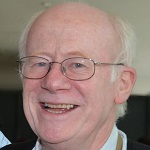5.2: Overview
- Page ID
- 11244
Elements of a Simple Control System
A basic control system for a regulated physiological variable consists of several components:
- Sensors -these are receptors which respond either directly or indirectly to a change in the controlled variable
- Central controller -this is the coordinating and integrating component which assesses input from the sensors and initiates a response
- Effectors -these are the components which attempt, directly or indirectly to change the value of the variable.
For a control system to function effectively, there must be a closed loop. The change due to the action of the effectors must be detected by the sensors. This monitoring by the sensors provides feedback to the central controller. This type of system is referred to as a servo-control system.
[ Diagram to come ]
For many apparently regulated physiological variables, it can be difficult to see how this control model fits. In some cases this is due to the complexity of many interacting factors and interacting control systems which are difficult to separate and state simply. However, a simple model for the control of water balance is easy to construct within this framework. It should be noted that additional mechanisms (eg local renal factors) can affect water balance quite significantly in some circumstances - some of these are discussed in Section 5.9.
Under normal circumstances, most water input is due to ingested water (as fluids or in food). The sensitive osmoreceptors adjust water balance by ADH-mediated changes in free water excretion into the urine and thirst-mediated changes in water ingestion. The mechanism for regulation of water balance is often referred to as the thirst-ADH mechanism. The following sections discuss the components of the control system in more detail.


